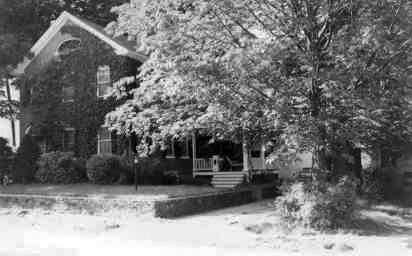Disclaimer
The Dover Public Library website offers public access to a wide range of information, including historical materials that are products of their particular times, and may contain values, language or stereotypes that would now be deemed insensitive, inappropriate or factually inaccurate. However, these records reflect the shared attitudes and values of the community from which they were collected and thus constitute an important social record.
The materials contained in the collection do not represent the opinions of the City of Dover, or the Dover Public Library.
1997 Heritage Walking Tour
Heritage Walking Tour Booklet October 1997 by the Dover Heritage Group, Dover, NH, c. 1997.
In 1978, a group called Dover Tomorrow formed to promote the growth and prosperity of Dover. A subcommittee was tasked with promoting “appreciation of Dover’s heritage”. The Lively City Committee created the first Heritage Walk the next year. It was so popular that new tours were created every year, and held through 2007. By 1982, Dover’s historical society, the Northam Colonists, had taken over the research and creation of the Heritage Walking Tour Booklets. The information on the page below is a transcription of the original Heritage Walking Tour Booklet. The Library has a complete set of the Heritage Walking Tours if you would like to see the original booklets.
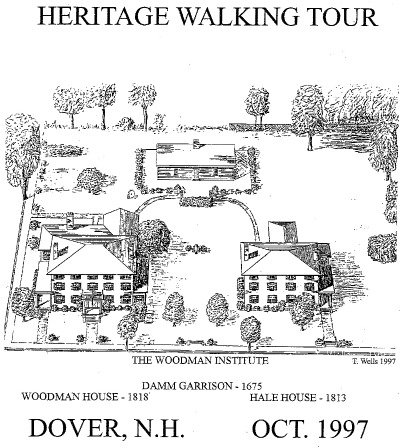
Woodman Institute
The Woodman Institute complex includes three houses: the William Damn Garrison built at Back River in 1675 and moved to the museum site in 1915; the Hale House, built in 1813 for John Williams and was the home of U.S. Senator John Parker Hale from 1840 until his death in 1873; and the Woodman House built in 1818 and residence of Charles and Annie Woodman.

182 Central Avenue (Woodman House)

This house was built by Captain William Palmer for his private residence, in 1818. Palmer lived here until 1822 when he swapped houses with Charles Woodman who was living just across Spring Street at 168 Central Avenue. Woodman was a wealthy Dover merchant, a member of the Legislature from 1820-22, and in 1822 was Speaker of the House. His tenure in the house was short, however. In 1822, he died, aged 32, leaving his wife and 3-month old son Charles. The elder Charles’ widow remarried three years later to Daniel M. Christie, a successful attorney, head of the N.H. bar for many years, and the father of three chief justices. Christie did not own the house, but it is sometimes called the Christie House after him. He lived in the south side of the house until 1849 with his wife, and as a widower after her death in 1876. The younger Charles Woodman inherited the estate from his mother. Charles and his first wife Hannah Coffin, of Newburyport, lived in the north side of the house. He married twice: Hannah died in 1854 and in 1856 Charles married Annie Elizabeth Allen. A successful financier and manager of the Strafford Savings Bank, he resided here until his death in 1885. When Annie E. Woodman died in January 1915, she left to the City of Dover the sum of $100,000 “for the establishment…of an institution for the promotion of education in science and art and the increase and dissemination of general and especially historical knowledge.” The trustees of the estate acquired the Woodman House and the adjoining Hale House, which by chance came on the market that same year. The Institute opened in August, 1916. The Woodman House serves as the natural history section of the Institute, with collections of minerals, fossils, extinct animal species, and Indian artifacts.
Damm Garrison
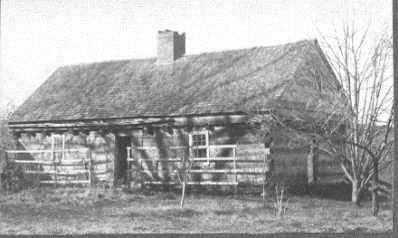
The oldest house in Dover, and the only surviving garrison out of 16 built in this area. The Garrisons were homes of prominent Doverites ordered to be fortified against Indian attack, or “garrisoned,” and served as protection for local residents. William Damm, born in 1653, was given a piece of land in the Back River District from his father Deacon John Damm, an early settler. Deacon John Damm lived in the settlement at Dover Point and acquired the land on the west side of Back River in the original apportionment by the settlers in 1624. He bought a number of adjacent lots and gave the property to William.
With his father’s aid, William built this garrison at age 20. The garrison was fortified for defense against the Indians, but does not seem to have ever been attacked. The house is 40 feet long and 20 feet wide, and the structure has walls six inches thick made out of hewn oak, some with musket slots. The windows were probably later additions. William Damm married Martha Nute in 1675 and lived in the garrison until his death in 1718. William’s son, also named William, lived here until 1740. William’s sister, Leah Hayes, inherited the house and lived here until 1770. It then passed to her granddaughter Leah Drew and then to Leah’s son William who died in 1868. When William died, the house was inherited by his son Edwin Drew. After 112 years in the Drew family, Edwin sold the garrison in 1883 to Mr. Bryant Peavey who gave it to his daughter, Ellen Rounds. In 1915, when Annie Woodman’s will was made public, Mrs. Rounds offered the garrison to the Trustees of the Institute. In October 1915, the garrison was relocated about three miles from its original site near Spruce Lane to its present location at the Institute. The relocation was performed over the course of one week, moved by four men using rollers, and one horse doing the hauling. The protective canopy was erected over the house to preserve it. An 800-piece collection of cooking utensils, farm tools, and colonial furniture can be seen inside the garrison.
15 Summer Street (Asa A. Tufts House)
This house was built by Asa Alford Tufts (1798-1884) in 1827 when he was postmaster of Dover. Asa Tufts served as a clerk in H. John Wheeler’s apothecary shop in 1820 and took over the business in 1830. In 1846 he became cashier of the Strafford National Bank and turned the drug store business over to his son, Charles. He retired from the bank at age 77 and became an insurance agent until he died at age 86. He also served as City treasurer from 1856-1865.
10 Summer Street (Wadleigh House)
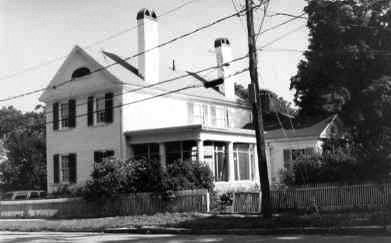
Simon Wingate, who bought the lot from Tobias Tuttle in 1825, built the house shortly thereafter. In 1828 he sold the house to George Pendexter and William Palmer. In 1834 they sold it to Francis Cogwell who in turn sold it in 1843 to George Wadleigh, author of “Notable Events in Dover History from 1st Settlement in 1623 to 1865.” After George Wadleigh died, his widow Sarah H. Wadleigh lived there for many years. Mrs. Wadleigh had the house remodeled around the turn of the century adding the dining room and the porch. The house passed to the Wadleigh’s daughter Elizabeth who lived there until the mid 1940’s. Elizabeth had married George H. Williams, the son of I.B. Williams, whose leather business was a key Dover industry from 1842 until the 1960’s. After the Williams’s, the house was occupied for a number of years by Parker Stiles who worked at the Navy yard, and then by Henry Hesse, an engineer for General Electric. In 1960, Mr. and Mrs. Edwin Dugal bought the house from Mr. Hesse.
185/187 Central Avenue (Woodman/Wheeler—Bacon/Pray—McManus/Tibbetts House)

This home, of pre-1827 origin, was built as a two-family duplex. It was first occupied by William Woodman (1782-1868), treasurer or the Savings Bank for the County of Strafford and president of Strafford Bank, and by John H. Wheeler (1860-1867), an apothecary whose shop was located just up the street at Tuttle Square. William Woodman was married to J.H. Wheeler’s sister, Rebekah (1794-1866), and both John H. and Rebekah were children of the Hon. John Wheeler (1770-1840) who owned the house next door at 189. John H. Wheeler’s son James eventually became a physician and started his medical practice at his father’s drug store. John H.’s daughter Sarah (1828-1857) also married a doctor, Harvard medical school graduate T.J.W. Pray, who began his practice in Dover in 1848. Dr. Pray, the end of the 1860’s, occupied one-half of this house with his second wife, Martha Matthews. The other half was owned by jewelry store owner Charles E. Bacon. Pray died in 1888, Bacon in 1898, and after widow Martha Pray and Bacon’s daughter Emily sold the house sometime after the turn of the century, this duplex was owned for several decades by bartender Patrick McManus and Mrs. Lizzie Tibbetts. McManus was well-known around Dover for his flashy Stanley Steamer automobile, and the three Tibbetts girls, Mary, Gertrude, and Sadie, were also renowned: the girls “wore flashy dresses, used a lot of make-up, and traveled with the race horse crowd.”
181/183 Central Avenue
No house existed at this location until about 1890. In 1892, real estate entrepreneur Theodore Woodman owned two small structures on this site, and the present house was constructed sometime before 1905. It has always primarily functioned as an apartment building and boarding house.
176/178 Central Avenue (Drew House)
The original house at this site was occupied until 1780 by Col. Theophilus Dame, jailer and High Sheriff of Strafford County. The structure was subsequently taken down by Capt. James Whitehouse. The current two-family brick was built before 1872 by Samuel and Charles Drew, who had also built the house next door at 172 Central Avenue. Samuel Drew, shortly thereafter, joined with builder George Pendexter in the construction of the new First Parish Church at Tuttle Square in 1829. During the 18th century, this house was inhabited by two physicians, Dr. Nathaniel Low (1792-1883) and Dr. James Wheeler (1831-1883). In 1901, Wheeler’s widow sold the house to Miss Caroline R. Wendell (1847-1930), founder of the Dover chapter of the Women’s Christian Temperance Union (WCTU). In 1993, the house was sold to Nicholas Tsimekles.
177/179 Central Avenue (Duxbury-Grimes House)
This relatively modern (ca.1900) home was owned by the misses Duxbury, Emily and Mary, music teachers and choir members at St. Thomas Episcopal Church. Surprisingly, this is the only house ever to exist on this lot. The land here remained vacant for over sixty years after Union Street was cut through between 1828 and 1829. After Emily’s death in 1906, Mary sold the house to Henry J. Grimes, Owner of E. Morrill Furniture Company, and she moved to Summer St. where she lived until her death in 1912. The Grimes family owned this home until the 1930’s. From the late 194-‘s until 1984 the property belonged to Blanche Meserve.
172 Central Avenue (Wyatt House)
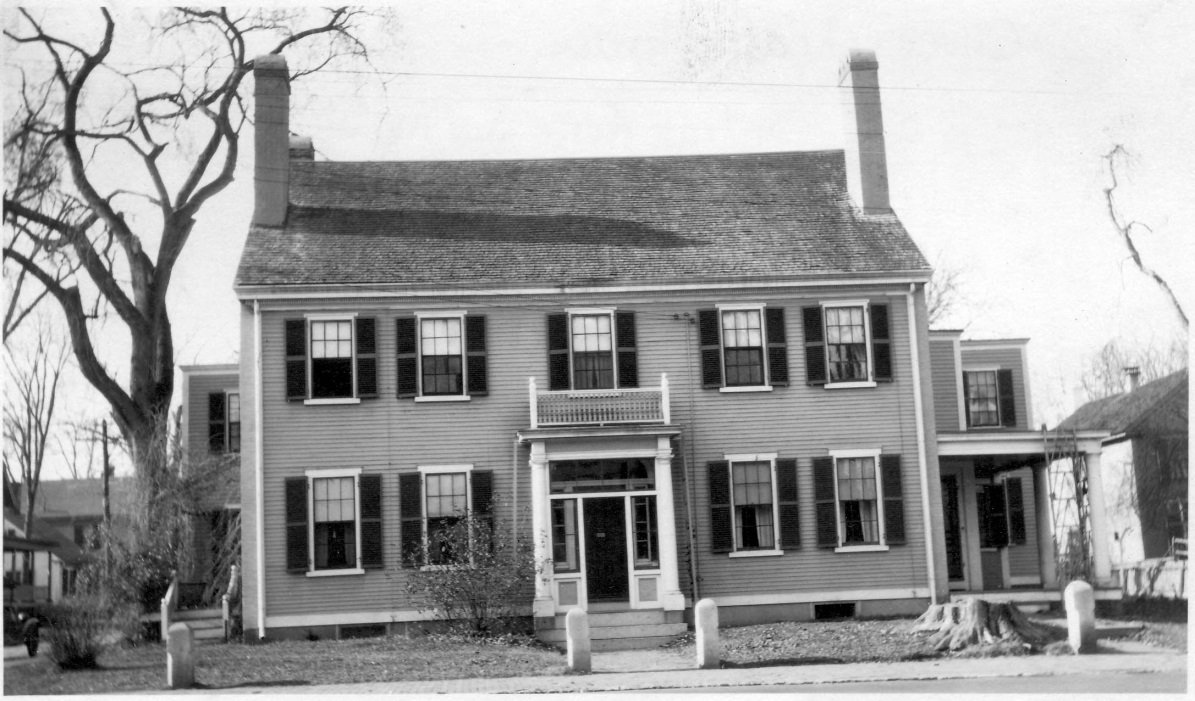
This wooden house was built ca. 1800, by house carpenters Samuel and Charles Drew. Although Charles died young, at age 31 in 1832, Samuel (1802-1882) continued to live here until the death of his wife Sabrina Canney in 1860. After the Civil War, the house was owned by Oliver Wyatt (1812-1891), merchant tailor. The home remained in the Wyatt family until 1924, when daughter Sarah last owned it. One of the Wyatt ladies was matron of the Children’s Home. Since leaving Wyatt ownership, the home has been an apartment house.
169 Central Avenue (Whitehouse-Tanguay House)
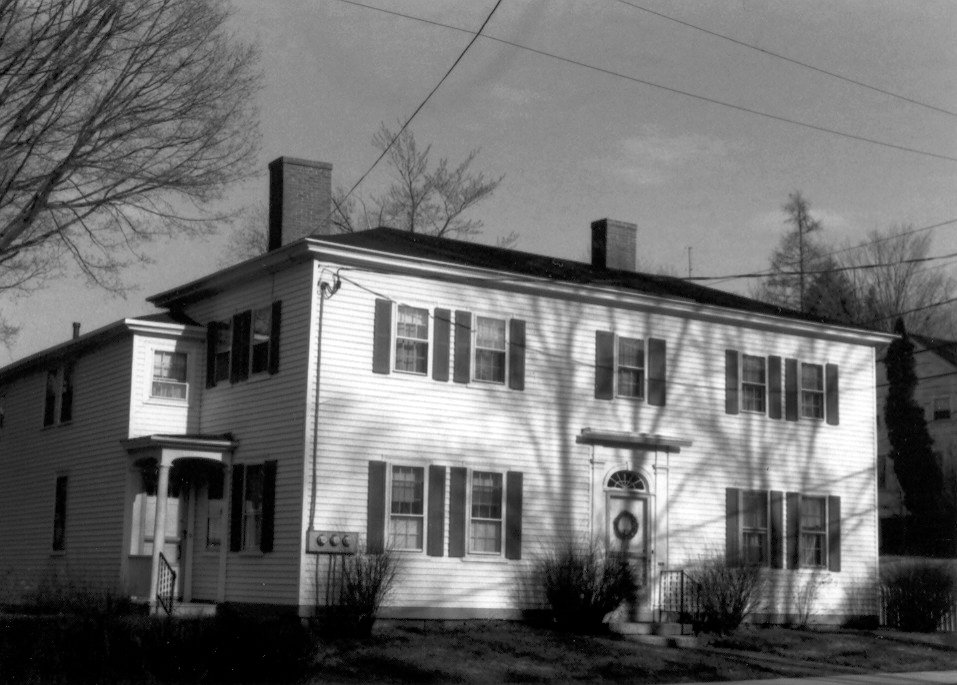
This house was built before 1827 and occupied by James Whitehouse. Whitehouse had been the mason in charge of the Sawyer Building at the corner of Main St. and Portland Ave. At that time, South Pine St. was called Whitehouse Lane. The home remained in the Whitehouse family until 1905. First it passed to his James (1816-1888) and wife Elizabeth Peaslee. They had two sons: James E. who moved to Joliet, Illinois, and Benjamin T., an unsuccessful Socialist Party candidate for both N.H. governor and later for U.S. Congress. Elizabeth died in 1905 at the age of 91. The house was purchased by May McCabe Tanguay, an Irish immigrant and widow with five daughters. Two of the girls, Rose and Teresa, were proprietors of The Hat Shop in Dover. The home remained in the Tanguay family until the 1970’s. Anna O’Neill then owned it until 1984.
168 Central Avenue (Palmer House)
This house is the second home at this site. A small one-story home was originally built here ca. 1760 by Richard Canney, a fisherman who eventually moved closer to the coast. In the early 19th century, after the current house was built, Charles Woodman was living here. Capt. William Palmer (1786-1869), a mason who had built both of the brick buildings now housing the Woodman Institute, was living at 182 Central Avenue at the time. In 1822, the two men exchanged houses. On January 28, 1822, Palmer purchased this house from Woodman for $2000 and on February 1, Woodman bought Palmer’s house for $4000. The Palmer family occupied this house for the rest of the nineteenth century. Later, it was occupied by Joseph Blackstock for fifty years.
3/5 Spring Street
This old dwelling is the second Quaker Meeting House, built on the corner of Silver and Locust Streets and moved here in 1728, Samuel Drew, a carpenter, lived in this house as far back as 1830. In September 1852 the state took the property from Mr. Drew to satisfy a judgement against him in favor of John Barker of Farmington. The property was sold for $654. John Barker sold the property to John Cassily in 1879. Mr. Cassily died shortly after buying the property but his widow Mary lived here until she died in 1901.
8 Spring Street
In 1897 Charles Palmer sold this house to John Cressy. In was subsequently owned by Fred H. Bean, Arthur P. Kittredge, and Paul Durnin. Mr. Durnin, proprietor of the Durnin Oil. Co., purchased it in 1950.
10 Spring Street
In 1859 George W. Glines, a shoe manufacturer, purchased this property from Isaac Nute. Mr. Glines was already living here when he bought it. When Mr. Glines died in 1894, his daughter Laura E. Holley inherited the property. She sold it in 1902 to Alice Allie of Durham and it became a rental property until 1973 when Norman and Ruth Jones bought it from Sarah Brown.
11/13 Spring Street (Estes House)
In 1975 Joseph Gage sold to Tobias Tuttle nine acres in the area of Spring and Summer Streets. Mr. Tuttle sold part of this land to Israel Estes, a blacksmith, in 1811. At that time there were no buildings on the land, and Spring Street did not exist. Mr. Estes built a house on the property and it remained in the Estes family until 1869 when Mr. Estes sold it to Joshua Varney, a tailor in downtown Dover. Mr. Varney sold it to Cyrus Littlefield in 1871. Edward Cocking, who had previously lived at 151 Locust Street bought the house around 1877 and lived here until his death in 1883. At the time of his death Mr. Cocking, who had been an engraver in the printery, owned several properties in Dover as well as a farm in Durham and land in Barrington and Madbury. He left this house to his wife Alice. The house was used as a Children’s Home at one time.
12 Spring Street
Aaron Roberts, a mason, who lived at 160 Locust Street owned the property when he died in 1900, and he left it to his wife, Ann Roberts. When Ann died 4 years later, she left the property to her daughter Maria Henderson. In 1919, Maria Henderson sold the property to her sister Annie Neal. Annie died in 1955 and left the house to her husband Fred Neal. When Fred died in 1960 he left the house to Mrs. Ester Gaulin who sold the property in 1961 to Elizabeth Barr. Elizabeth Barr’s husband Robert had been proprietor of the Central Pool Room at 333 Central Avenue.
160 (formerly 44) Locust Street
Aaron Roberts, a mason, lived here from around 1871. Mr. Roberts died in 1900 and left the property to his wife Ann E. Roberts. When Ann died 4 years later, she left the property to her daughter Annie Neal. The Neals, who live at 79 Silver Street owned this Locust Street house as rental property. When Fred Neal died in 1960, he left the property to Mrs. Grayce McEldowney. In 1961 Mrs. McEldowney sold the property to Walter Whiting, who had been living at this address for many years. Mr. Whiting was the proprietor of Whiting Stationery & Book Store.
155/157 (formerly 47) Locust Street
This house was most likely built by Mr. William Wilbur. It is claimed that the front of the house was built around 1750 and the rear sections added on later. In 1820 James Davis sold the lot to Thomas Bickford who it turn sold it to William Wilbur in 1839. There was no house on the lot then but Mr. Wilbur was listed as living here in 1846. At that time the name of the Street was High Street. William Wilbur died around 1850 and his widow Hannah lived here until 1878 when she sold the house to George E. Durgin, clerk of the Supreme Court in Dover. Mr. Durgin died in 1904 and left the house to his daughter Miss Ella G. Durgin who was living with him at the time. Ella was still living here in 1943. She died in 1946. The house has had a number of occupants since the 1940’s including Edwin C. Jenness, Raymond E. Levitre, Charles A. Farrar, William Robinson, Mrs. Andell Fernald, Rev. Maurice McEldowney, and Doug Gray. The present occupant is Mary Cowen.
153 Locust Street
John W. Tuttle (1806-1857)lived here in 1837 and may have been responsible for the construction of other residences in the district but no records have survived to document this fact. After John’s death, his widow Sarah Tuttle (1806-1895) lived here until 1895. The next resident was Frank Waldron, a report for Foster’s Daily Democrat, who owned the property until he died in 1927. Frank Waldron’s son Charles G. Waldron was mayor of Dover. After Frank’s death, his second wife and widow, Mrs. Rosamund Waldron lived here until 1948.
151 Locust Street
Edward Cocking, an engraver at the printery lived here until 1859. In 1877 he bought the house at 11 Spring Street and moved to that location while keeping this property. Mr. Cocking died in 1883 and left considerable property in the Dover area.
148 Locust Street (Charles Tufts House)
This house was built about 1810 and has changed very little over the years. Charles Tufts, son of Asa A. Tufts who lived across the street, lived her for many years. He was a pharmacist at Tufts’ Drug Store on Washington Street and also in the insurance business. After Charles’ death, his granddaughter Anne lived here until the 1980’s, keeping it as it was in her youth, with a picket fence, antique furniture, straw matting, old fashioned gardens and old stables.
147 Locust Street
Charles Hayes, a carpenter lived here from 1859 until his death in 1892. Other occupants of this house include Edmund J. O’Brien who bought the home in 1939. Mr. O’Brien was a route salesman for the M& M Bakeries.
Ricker Field
Ricker Field was named for John Ricker who lived at the southeast corner of Silver and Belknap Streets in the mid 1800’s. This field included all the land behind Silver Street from Locust Street to what is now Rutland Street. In October, 1859, the N.H. State Fair was held here, with a large attendance and receipts of $6000, “a larger sum than ever before taken.” John Ricker died in 1868 and that same year his widow, Marilla Marks Ricker, sold 35 acres in Ricker Field to Daniel Hall, Andrew Young, and Samuel C. Fisher for $13,250. These three gentlemen developed the land into house lots along Summer, Elm and Hamilton Streets. Mrs. Ricker was an able lawyer, aggressive suffragette, and vocal atheist. She was the first woman to be admitted to the bar in both the District of Columbia (1882) and New Hampshire (1890) and was granted permission to the practice before the U.S. Supreme Court (1891). She unsuccessfully tried to be: Minister to Columbia, the first woman to run for Congress (1898), and for the governorship of New Hampshire (1910).
21/17 Summer Street (Dow-Fisher House)

Built ca. 1830, this large house was constructed on land given by Samuel W. Dow by his father Dr. Jabez Dow (1776-1839). Jabez Dow owned the adjacent house facing Silver Street (Gage-Dow House). His son, also a doctor, began practicing medicine with his father in 1825 and resided here until 1837 when he was committed to an insane asylum in Somerville, Massachusetts and died that same year. The home was bought by the Episcopalian minister, Rev. Horton, but in 1848 it was owned by Lucius Everett. In 1865, the house was bought by Co. Samuel C. Fisher (1822-1909). Fisher had been a dry goods merchant in Dover operating, operating two stores: one downtown and one on the Landing. In 1863, during the Civil War, he moved to New Bern, N.C. where he operated a hotel called the Gaston House, owned a cotton plantation, a large farm, and a dry goods business. He acquired a good deal of his wealth during this stint in the South. In 1865, Fisher moved back to Dover and purchased this house. The Colonel served as a director of the Strafford National Bank and trustee of the Strafford Savings Bank. A real estate baron, Samuel Fisher was said to have been the heaviest taxpayer in all of Strafford County. He married three times. His first wife, the daughter of Benjamin Barnes, died before 1863. His second wife, Sarah Christie, daughter of Daniel M. Christie, died in 1897. In 1899 he married Emily Bacon, daughter of jeweler Charles E. Bacon. Fisher’s passion was racehorses and several were kept in the stables here.
145 Locust Street
Dr. Carl H. Horsch lived here in 1876 and still lived here when he died in 1891 when his widow Fannie inherited the house. Dr. Horsch also ran a business here known as Pine Grove Mineral Springs. Before Summer Street was put through, he had his office in a small building to the left of the house.
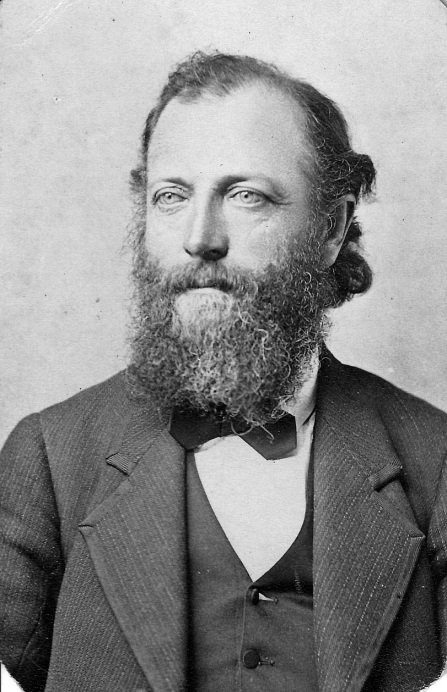
Dr. Carl Horsch
Other occupants included Henrietta Horsch, daughter of Dr. Horsch (1938), Henrietta and her husband Lewis S. Segee (1950), Stanley Shaban (1958), Margaret Harkins (1968), and Eugene S. and Simone C. Beliveau (1968). Mr. Believeau was a teacher at St. Thomas Aquinas High School.
143 Locust Street
Oliver W. Coleman, a teamster, bought this house from J. Hayden Smith in 1887. After Mr. Coleman’s death, the house was owned by his three daughters, but in 1912, the title was transferred to one of the daughters, Ida B. Prescott and her husband George Prescott. George Prescott, a farmer and carpenter, used the building as a winter residence. The original lot that Oliver Coleman bought was 220 feet deep, but in 1934 Ida Prescott sold the back half of the land to Roy B. Ireland who had just purchased the adjoining property on Silver Street. After Ida’s death the house became the property of her sister Elizabeth C. Lewis who sold it to Oswald Carberry in 1937. Mr. Carberry, who owned a shoe store in Franklin Square, lived here until 1951 when he sold it to Ivey Telles. After that it was owned by Albert and Eloise Marley, then Carl Sandberg and in 1964 was purchased by Norman Huppe. In recent years the house has had several additions and is now divided into rental units.
137 Locust Street
George Gray, who was a jeweler in Dover, owned this house and lived here from 1843 until his death in 1880. After George died, his widow Mary E.H. Dow lived here a few years until she married Henry Dow, who lived across the street. Mrs. Dow continued to own this house into this century, although she moved to 30 Silver Street. Other occupants include Earl W. Crocker (1938), Amie Lacroix, proprietor of Amie’s Delivery Service (1950), J. Frank Moore (1950, 1958).
30 Silver Street (Gage-Dow House)

This house was built ca. 1723 and was the residence of Capt. John Gage during the American Revolution. Gage’s wife, Judith, had a sister Rebecca who kept a school here for many years. She was known as “Marm Becky.” After Capt. Gage, Thomas Footman, who had previously been the Town Jailor, acquired the house and operated it as a tavern. In 1802, Dr. Jabez Dow, who had previously studied under Dr. Jacob Kittredge, returned to Dover to practice medicine. Dow acquired the house and practiced here until his death in 1839. He was one of the founders, in 1808, of the Strafford County Medical Society, and in 1818 was elected a Fellow of the N.H. Medical Society. He was the best know surgeon in Dover and the surrounding towns for 30 years. Mrs. Mary Edna Hill Gray married Henry Dow and moved here from her house at 137 Locust Street, after the death of her first husband George. In 1888 Mrs. Dow became the first woman president of Dover Horse Railroad Company. Noted as a remarkable woman, according to the New York Sun, she “was able to reduce fares from six cents to five, raise all her employees’ pay, double her insurance coverage, introduce a ticket system that cost her nothing because she solicited advertising for the banks on the stubs, supervise the purchase and care of all the horses, and still realize a hefty profit for the investors.” The short history of horse drawn trolleys in Dover came to an end soon after Mrs. Dow sold the railway to Henry W. Burgett of Massachusetts in 1889, who converted to an electric railway. Mrs. Down, who had been a newspaper correspondent, a French and German teacher, and assistant principal at Rochester High School, was also a vocal advocate of women’s suffrage. Each year her property taxes were paid under protest because she felt that she had no say in where her money was spent. She was also an accomplished homemaker winning State Fair blue ribbons for her jams, jellies, brown bread, and tatting patterns. She loved to hunt, fish, and swim, and was an avid gardener with the “best asparagus in Dover.” She also managed to raise three children. The Dow family and their direct descendents owned it until it was purchased by Portsmouth Preservations, Inc.
36 Silver Street (Second Quaker Meeting House Site)
The Second Quaker Meeting House was moved to 3/5 Spring Street where it still stands. The House was originally constructed here in 1712 and had a burying plot.
31 Silver Street (Wingate House)
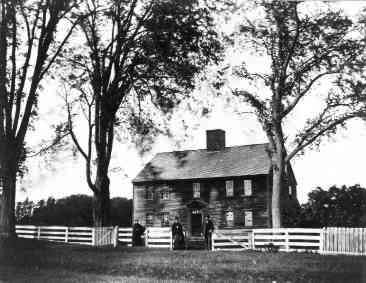
This house was the winter residence of Jerry Wingate, a Dover pharmacist and businessmen. Mr. Wingate’s main residence was on Dover Point Road. Mr. Wingate kept a little store on the porch section of the house where he sold candy to children on their way to school.
119 Locust Street (Frost House)
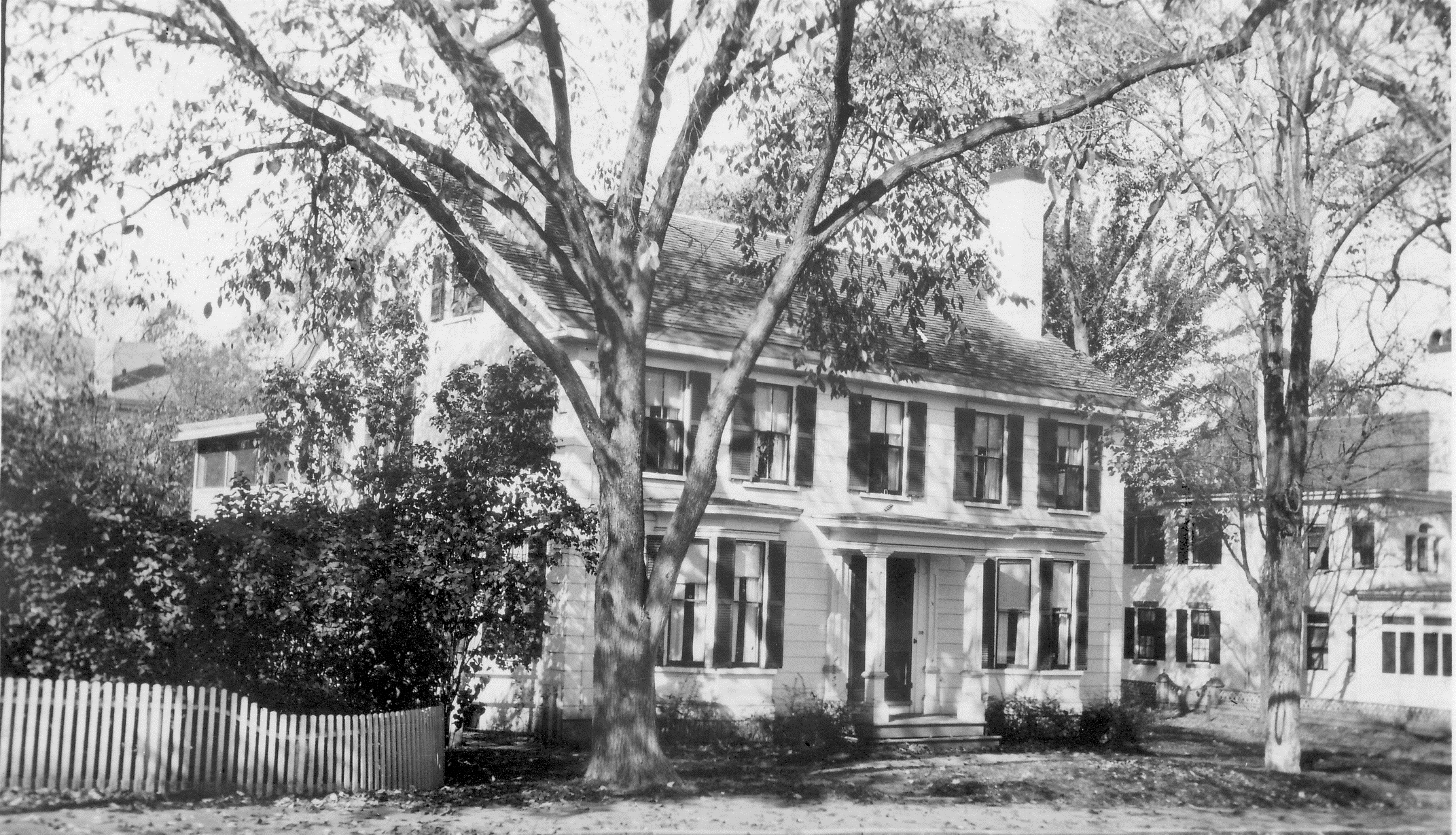
This house was built in 1831 and it is said to have been the first house contracted for by builder Nathaniel Twombley. It was a sanitarium in its early days. Judge George Frost of the Dover Municipal Court purchased the house from Samuel Wheeler in 1883. In the days of the gundalows, the Frost family had been very active with that form of important river transportation. Judge Frost had three daughters who were actively involved in the Red Cross during both World Wars, and were engaged in other social work as well.
118 Locust Street (Seavey House)
J.H. Seavey bought a hardware business from the George Rollins estate in 1879, which became the Seavey Hardware Store. He built this house which passed to his son, Norman Seavey, who continued the business until selling it in 1944.
114 Locust Street (Moses Paul House)

This house was built for Moses Paul, who became an agent of the Cocheco Manufacturing Co., in 1834. He was an ardent Free Mason whose life was one of continuous progress and accomplishment; his Masonic activities mark him as one of its outstanding leaders. Moses Paul Lodge, organized in 1889, was named after him. The house was sold to Dennis Foss, Jr. around 1870. Mr. Foss bought a flax mill at Dover Landing which became a lumber mill. His son Alonzo Foss who also lived here, was Mayor from 1893-1895.
113 Locust Street (Corporation House)

This house was built about 1831 by the Cocheco Mfg Co. as a residence for their superintendents or their agents, the senior position in the company. This house is also known as the Lincoln House because Abraham Lincoln spent the night here during his presidential campaign tour in March 1860. He slept in the northeast bedroom and made his own bed before coming down to breakfast.
12/14 Church Street (Worthen House)
This house was built ca. 1883. It is named after one owner, Mr. Henry A. Worthen who ran a carriage shop on Lower Locust Street in back of City Hall.
7 Church Street (Samuel Wyatt House)
Mr. Wyatt had this house built in 1835. Mr. Wyatt owned the Dover Hotel, also known as Wyatt’s Inn, on Tuttle Square and the New Hampshire Hotel, as well as hotels in Medford and Boston, Mass. These Dover hotels were visited over the years by many famous people including President Monroe (1817), General Lafayette (1825), and former President John Q. Adams (1833). Mrs. Wyatt was a well known educator and author and is said to have taught more children than any other lady in New Hampshire. Her students included renowned attorneys and members of Congress. In 1840 the house was sold to Silas Moody, a furrier and businessman, and then in 1896 to Washington Anderton, a fabric colorist brought from England for the Cocheco Mfg. Co.
4 Church Street (McGrail House)
This house was built circa 1890. In 1889, Capt. Washington W. Hardy purchased the property and buildings here for $2,700. Captain Hardy, a resident of Dover since his youth, was married to Elizabeth Bickford, daughter of Dr. Alphonso Bickford, a prominent physician and one of Dover’s mayors.
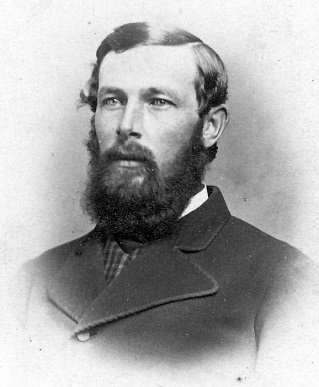
Washington Hardy
Thomas Hardy, the Captains grandfather, was a Revolutionary War soldier. Captain’s Hardy’s father, also named Thomas, was an 1812 graduate of Dartmouth College, a well-known educator, and representative in the New Hampshire Legislature. Washington Hardy began his seafaring life in 1854 on a six month voyage that took him from New York to Havana, the West Indies, London, and back to Boston. In his 48 year career, Capt. Hardy navigated the globe over 13 times. During the last 30 years preceding his retirement, he captained various ships engaged chiefly in the China and Japan trade. In 1901, Capt. Hardy retired from life at sea and began working as an agent at Equitable life Assurance Society of the U.S. Approximately 10 years later, Hardy retired from the insurance business and sold the property on Church Street. The house was occupied a few years later by Thomas McGrail who ran a drug store in Central Square. McGrail’s descendents resided in the house until the early 1950’s.
St. Mary’s School
St. Mary’s was built in 1912 on the site of the Sisters of Mercy Convent and earlier, the New Hampshire Hotel.
First Parish Church, 218 Central Avenue –
This church is the fifth meetinghouse of the First Parish Congregational Church which is the oldest parish in New Hampshire and one of the oldest in the nation. The parish was founded at Dover Point in 1633 with the first church built five years later in 1638. For years, until its incorporation in 1762 as a separate legal entity, the parish was synonymous with the Town of Dover, and the meetinghouse and courthouse were one. The location of the first church site at Dover Point is unknown. The second site was on the west side of Dover Point Road and was built 1652-1658. The site is marked with a plaque, and the earthworks thrown up around it in the time of the Indian troubles are still evident. A third meetinghouse was built in 1710 at Pine Hill, the move reflecting the increased population at the Village of Cochecho. In 1758, the fourth meeting-house was constructed at Tuttle Square and served for court sessions and town meetings as well as religious services until 1789 when the court house was built across the street, where the Mobil Station now sits. Though First Parish was incorporated from the town in 1762, it continued to be supported by taxation through 1828 when the mills and the influx of other religious denominations brought an end to the church/state union. The wooden meeting-house at Tuttle Square was sold in 1829. Half of the building still exists as a private home on Court Street. In place of the wooden structure, a brick building was erected, finished in 1829, and is the church we see today. Distinguished among those who have served the parish is the Rev. Jeremy Belknap who was minister from 1769-1786. He is the author of the landmark “History of New Hampshire.” An ardent revolutionary, Belknap was present with the troops in Cambridge shortly after the Battle of Lexington in April 1775. He was a friend of Benjamin Franklin, George Washington, and many other patriots. He corresponded with them and Benjamin Franklin said of him that there were few men who did more to further the cause of the American Revolution. The rear portion of the church structure sits on property which was the former site of the Belknap School. It is recorded that the founders of the Episcopal Church met at the school prior to the building of their church in 1840.
Tuttle Square

Standing in front of the first Parish Church and looking across Central Avenue toward two gas stations, one is looking across Tuttle Square or “The Corner” as it was earlier known. This was the center of Dover’s civil activities in the late 1700’s and early 1800’s. This sketch shows Tuttle Square as it may have appeared about the year 1840.

Progression of happenings in the square during these earlier years:
1758: The First Parish Members built their fourth meetinghouse, a wooden structure here on the site of the present one.
1760-1770: John Titcome built a house which came into the possession of John Hanson who began using it is an inn in 1773. This was later known as Gages Inn, Wyatts Inn, and the Dover Hotel. In 1854 it became tenements and was later removed for a gasoline station which was in the existing small brick building.
1771: Strafford County became incorporated. Dover became the county seat.
1775: Rev. Jeremy Belknap of the First Parish Church addressed a troop of militia drawn up in the square.
1789-1792: The Court House was built on the site of the now existing Mobil gasoline station. In 1792 Dover was the Capitol of New Hampshire for one year and the legislature met here in June. The building was sold for tenements in 1845 and later removed.
1828: Amos Cogswell’s house on the corner of Church Street was moved north to the corner of Angle Street, and Samuel Wyatt built the New Hampshire Hotel on the site. This later became a Catholic Convent and finally gave way to the existing Dover Catholic School in 1912.
9 Silver Street (Frank Christie House)
Mr. Christie, a leading horsemen of his day, lived here. Backed by the Hon. Frank Jones, a Portsmouth millionaire brewer called “King of the Alemakers”, he established Granite State Park near Willand Pond as a trotting track for his and Jones’s thoroughbreds.
17/19 Silver Street (Old Inn/Freeman House)
The Inn was built in 1708 by Col. James Calef when Silver Street was called the Barrington Road and was only a cart track; old records speak of a flower garden in front of this house. Now it is the only house out of line with the street, as its granite threshold is directly on the sidewalk. Besides serving as an inn, this home has also been a school, a rooming house, and the location of several businesses. Daniel Webster stopped here when he was a young lawyer and argued a case at the court house. Its old clapboards are covered with shingles, but its architecture is still similar to the old Jackson House in Portsmouth. At one time, the father, mother, and sister of minister and historian Jeremy Belknap lived here. Excepting the Damm Garrison, it is the oldest structure in Dover. Currently housing apartments, it is the oldest building in the City which is still inhabited.
Silver Street
Adjacent to the Tuttle Square Apartments, there is an empty lot where once stood a famous tavern operated in the 18th century by Christine Otis Baker. Mrs. Baker was born Margaret Otis, daughter of Richard Otis, who in 1689 owned one of the five garrisons in present-day downtown Dover. (Otis’ was on the site of the present Christian Science Church on Central Ave.) Margaret was three months old at the time of the famous Indian massacre of 1689. The Otis garrison was attacked and burned, her father killed, and she and her mother taken captives to Canada. French Jesuits in Montreal bought the child and her mother from the Indians, baptized the baby a Catholic, and gave her the name Christine. She was placed in an Ursuline convent in Montreal. In 1707 she married a French resident and became a naturalized citizen of French Canada; she bore him three children before he died in 1713. That same year Thomas Baker, himself a former captive, arrived as emissary from Gov. Dudley of Massachusetts to ransom English captives. Christine Otis Lebeau was to be one of them, but the French government balked at allowing a naturalized citizen to emigrate. In the end, Christine escaped, leaving her two surviving children and forsaking her considerable property rights in the city. She returned with Baker to Massachusetts where they were married in 1715. Christine was rebaptized in the Protestant faith, receiving again the name Margaret, although she continued to be called Christine. It was not until 1734, when her husband retired from government service, and 45 years after she had left Dover that she returned to her birthplace. She bought a house here and furnished it for a tavern. Her application to the Dover court for permission to keep a public house was refused. Not a woman to be denied, she petitioned the General Assembly of N.H. to pass a private act in her behalf. She opened her tavern in 1735. It became one of the most celebrated public houses of the area. Christine Baker ran the house until the death of her husband in 1753, when she herself retired. She died in 1773; the Rev. Jeremy Belknap preached at her funereal. The tavern was later Kennedy’s Saloon with a wooden canopy over the sidewalk and hitching posts along the curb. Unfortunately, this fine brick building burned in the last decade and erased this landmark.
206 Central Avenue
The southwest corner of Tuttle Square has seen numerous changes. Now the Tuttle Square Apartments, the site was occupied from the late 18th century through most of the 19th by Jeremy Perkins’ store. The Perkins’ (father and son of the same name) sold West Indian goods, hardware, seed and various agricultural implements. As late as the 1950s and 60s the building housed Meyrand’s grocery store. In the last decade of the 18th century, when Tuttle Square was simply known as ‘The Corner’, the rear of the building was the location of a printing house and Dover’s first newspaper office.
202 Central Avenue (Wentworth House)
The Wentworth house was owned by Frank Wentworth who had a bicycle shop and brought the first automobile to Dover.
195/197 Central Avenue
This home, nearly identical to 191/193 Central, was probably built during the 1870’s. Butcher Herman Vyth owned it until 1917. The James Collins family purchased the house and occupied it until the late 1960’s. It now contains apartments.
191/193 Central Avenue
In 1892, 191-193 was owned by Mrs. Mary Edna Hill Gray Dow, first woman president of the Dover Horse Railroad. In 1895, Theodore Woodman (1841-1912), son of Samuel and Lydia Rollins Woodman and last surviving member of the Durham Woodmans, lived here and operated his thriving real estate empire. After Woodman’s death, this house was owned by the McNeils until 1934, the Marshals until the late 1940’s, and Joseph N. Mayrand during the 1950’s and 60’s.
189 Central Avenue (Wheeler-Lane House)

This home was built ca. 1790 by James Remick. In 1827 it was the home of Hon. John Wheeler (1770-1840), president of the Strafford Bank. Wheeler’s widow Elizabeth sold the house in about 1850 to Edmund J. Lane (1802-1884), a books and stationery dealer and deacon of the First Parish Church. Lane had first married Elizabeth Barker (1798-1838) and had a son, Edmund, then married Martha J. G. Barker (1812-1870) and had four more children. Lane moved the house several feet and had it thoroughly repaired. He lived here until his death and his son Edmund B. (1837-1924) and his daughter Anna (1870-1932) owned the house thereafter. During the 1930’s and 40’s, James Devereaux lived here. In the 50’s and 60’s John Reardon was the owner. The house now contains three apartments.
192 Central Avenue (Hale House)
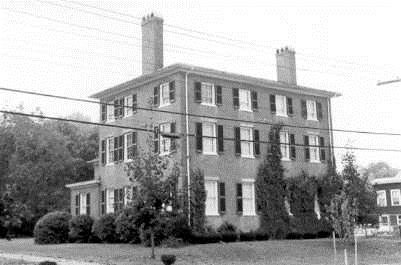
Built by Capt. William Palmer in 1813 for John Williams, founder of the Dover Cotton Mills in 1812, the nail factory at lower falls in 1821, the cotton mills in 1822 and the print works in 1827, bringing machinery at work-men from England. In 1840, U.S. Senator John Parker Hale purchased the home and lived there until his death in 1873. “A citizen of public spirit and high character; an orator of surpassing pathos and poetry; a fervid champion of the oppressed and enslaved; an inspired apostle of human liberty; and a conscientious statesmen of purity and patriotism,” as spoken by Senator William E. Chandler at the dedication ceremony in July of 1916. Mrs. Hale lived in the home until her death in 1902 when it then became the property of daughter Lucy, wife of Senator William E. Chandler.
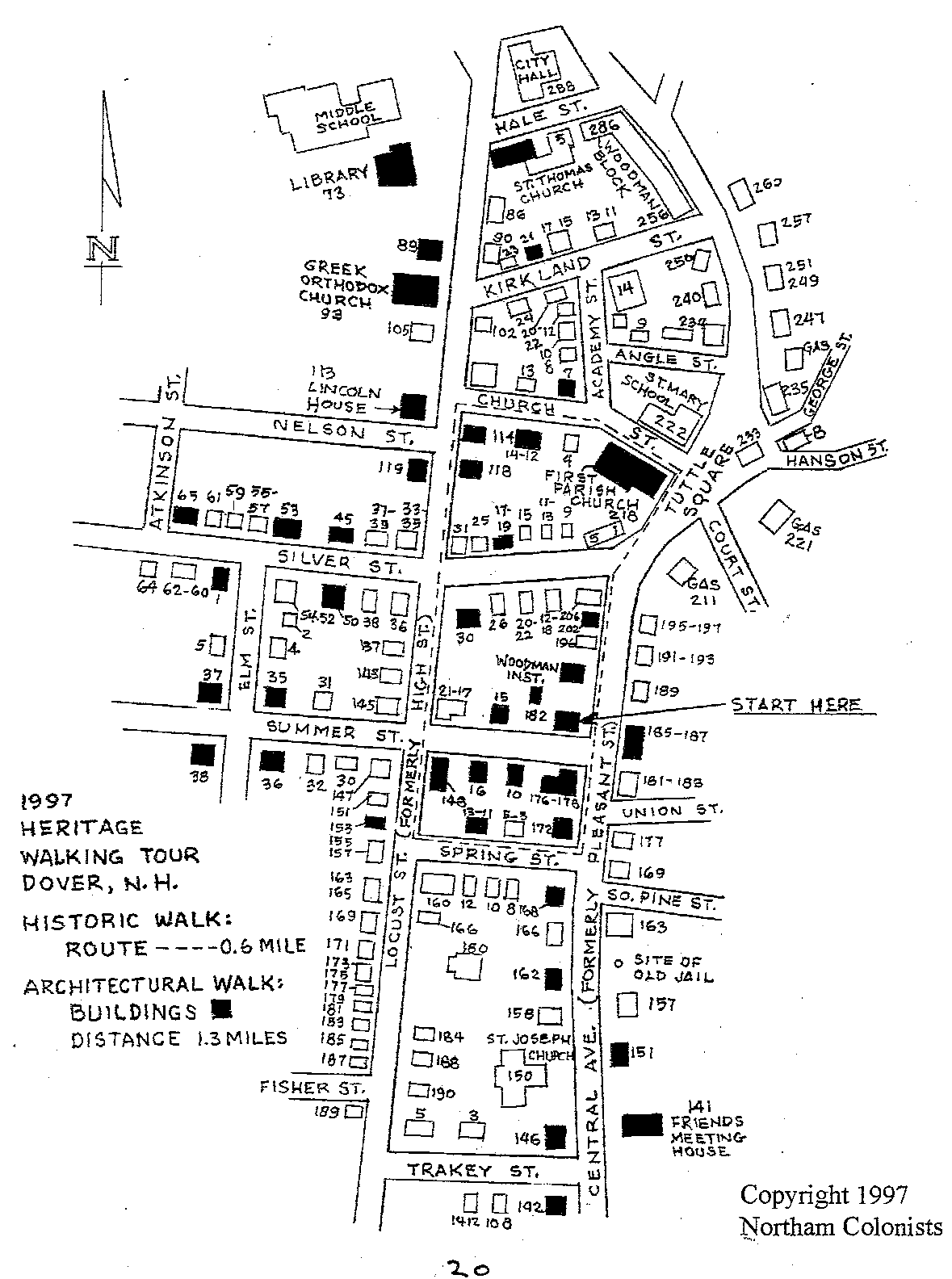
This historical essay is provided free to all readers as an educational service. It may not be reproduced on any website, list, bulletin board, or in print without the permission of the Dover Public Library. Links to the Dover Public Library homepage or a specific article's URL are permissible.

